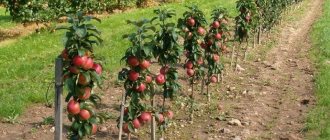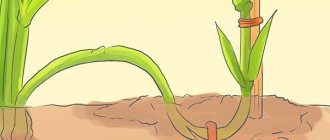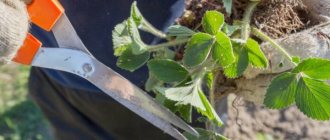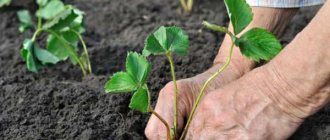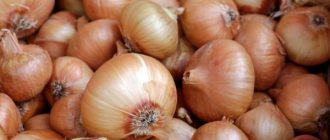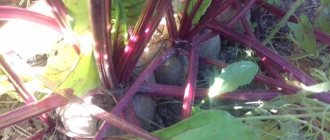Strawberries are the first to open the gardening season. Children and adults love to eat its berries. To get the richest harvest possible, you need to take care in advance of planting the cultivated plant in a new place. We will tell you in our article how to properly plant strawberries in open ground in the fall and when is the best time to do it.
The correct technology for planting strawberries in open ground in the fall rests on three pillars:
- Landing time
- Soil preparation
- Proper care of seedlings in the pre-winter period
By following the recommendations of experienced gardeners, you will not make common mistakes in this sensitive matter. Tips for proper landing will be as follows:
- Take strawberry seedlings from an old plot. Replant 1-2 year old bushes into a new bed.
- Remove the lower leaves and tendrils from the seedlings.
- Change the location of the garden bed once every 4 years. During this period, the berry sucks out all the microelements necessary for growth from the soil, and the yield gradually decreases.
- Plant the bushes correctly: in a checkerboard pattern.
- Keep the distance between seedlings within 30-45 cm.
- Before moving to new soil, soak the roots of the seedlings in hot water and coat them with clay.
- Plant different varieties of strawberries far apart from each other so that the crop does not become over-dusted in the first year.
- Choose a sunny, open place for the flower bed.
- The ideal place for a new garden bed is considered to be planting beds after beets, carrots, herbs, and garlic.
This is interesting! If the sweet Victoria variety grows in the shade, the berries will be sour. Strawberries lack the heat and light of the sun to produce their sugary taste.
Advantages and disadvantages of planting strawberries in the fall
The correct name for the berry, which amateur gardeners call strawberry, is garden strawberry. But it just so happened that this mistake in the name stuck, and we believe that we grow strawberries, although this is a slightly different crop. The timing of its planting greatly depends on the climate of the region. So, in the south, planting is most often carried out in the spring (starting from the end of March, for about a month). However, the October option also exists. In the Central region, planting almost always occurs in early autumn. In the north, planting work has to be completed in mid-August, so this is often done in the spring.
Summer-autumn planting in many areas is more reliable because, if you are not late, the seedlings take root well before frost. After all, at the end of summer and beginning of autumn the weather is optimal: there is no heat and, as a rule, there is enough moisture. In the spring, the heat can quickly come, the unestablished bushes will hurt and suffer from a lack of moisture. And, most importantly, it is by the end of summer that the mustaches are ready - young bushes that are most often used to propagate strawberries. It is very convenient to dig up the mustache and immediately transplant it to a new place. Next year these bushes will produce their first, although not very large, harvest.
Whether to plant strawberries in autumn or spring depends on the region, the variety, and the gardener’s preferences.
There is a risk of autumn planting in the northern regions, since unexpected frosts may arrive early. In the middle zone, there are apparently no downsides to planting in autumn: it’s easier to do than in spring, there’s enough time for preparation, and there’s usually more than enough mustache. It is important that in the new place they have time to take root well, that is, that at least a month remains from the moment of planting until the onset of severe cold.
Common mistakes
- Bad seedlings. Even proper care will not give results if weak seedlings were initially selected. A good bush should have from 3 to 5 healthy leaves, the roots should be juicy, moist without signs of dryness or disease.
- The root system is not straightened in the hole. When the strawberry is placed in the hole prepared for it, it is necessary to carefully straighten each root. This is much easier to do if the roots are 7-10 cm long, otherwise it is better to shorten them than to twist or crumple them in the hole. For convenience, one wall of the pit is made vertical in order to press all the roots against it and distribute it over its surface.
Dates of autumn planting in different regions
The specific timing of autumn planting of strawberries depends on the readiness of the mustache and on the current weather: it is advisable to carry it out in cool weather, in the absence of prolonged rains and slowly.
- So, in the middle zone and, in particular, in the Moscow region, they try to plant strawberry mustaches in August, the last date is the first ten days of September.
- In the south (Kuban, Stavropol, Lower Volga region) there are no problems for growing strawberries, unless there is a prolonged drought. Autumn planting here occurs in the first half of autumn; they try to finish it around the first ten days of October.
- In the harsh conditions of Siberia and the Urals, it is necessary not only to carefully select varieties, but also not to make mistakes with planting dates. Here preference is given to spring work. If you have to do this in the fall, then “autumn” in terms of planting strawberries ends in the very first days of September, and planting begins as soon as the mustache is ready.
Until what time can strawberries be planted?
It depends on the type of seedlings.
strawberry seedlings with ZKS
Seedlings with ZKS: mid-April – mid-October. Strawberries are not afraid of frost; there is no need to spend time and effort on rooting such seedlings - they are already rooted. It is enough to simply dig a hole the size of the earthen clod and plant the plant at the same depth as it grew in the container.
seedlings with ACS
Seedlings with ACS: mid-August – mid-September. As a rule, such seedlings are sold by nurseries - these are grown and rooted children from the mustache. These are cheaper than seedlings in containers, they are easier to transport to the planting site, since they take up little space and weigh little. But they need time to take root on the site - rooting takes about a month.
Planting strawberries with ACS later than September 15 is a big risk, because after October 15, serious cold snaps begin and the plants may die. Even lustrasil won't help here. And even if they survive, they will not survive the winter well.
Own mustache: mid-August – mid-September. The same rules apply here as for seedlings with ACS.
What varieties are planted in autumn?
In addition to traditional strawberries, which produce one harvest per summer, remontant strawberries, which bear fruit continuously or 2–4 times per season, are also very popular. Ordinary strawberries, like any berry crops, are divided according to harvest dates into early, mid-early and late. The timing of its fruiting is slightly adjusted and the timing of autumn planting. Indeed, in the case of late varieties (such as Mitze Schindler), you have to wait for the end of fruiting; the mustache also grows later on them. The latest varieties are sometimes more convenient to plant in the spring.
Mitze Schindler strawberries only ripen in August and are not easy to plant in the fall.
If we talk about remontant varieties, the situation here is somewhat more complicated: after all, some of them produce crops right up to frost. Therefore, sometimes it is even necessary to interrupt fruiting, cutting off the ovaries and peduncles. In addition, many varieties of remontant strawberries produce very few mustaches, and some are completely without mustache (for example, Sweet Evy). They are propagated either by seeds or by dividing adult bushes. In order not to lose the harvest, they try to carry out division in the spring, before flowering. Thus, the timing of planting remontant strawberries very much depends on the specific variety.
Strawberry predecessors during autumn planting
The rules of crop rotation apply not only to vegetable crops: when growing strawberries, you also need to pay attention to their predecessors. Optimal in this regard are cabbage, green and legumes, onions, and garlic. The best predecessor is clover, and any other green manure. Under no circumstances should you grow strawberries after raspberries, blackberries and nightshade crops (tomatoes, eggplants and especially potatoes): they have the same diseases.
Since by the time strawberries are planted, the garden bed is cleared of garlic, I have been doing exactly this all my life: I plant garlic in the place where strawberries are planned for next year. The soil after garlic is not very depleted, but is reliably disinfected with its phytoncides.
Garlic is one of the best precursors for strawberries.
Strawberries can be neighbors of almost any crop: you should not plant nearby only those that produce abundant shoots (raspberries, cherries, horseradish, etc.). Optimal neighbors are salads, onions, garlic, parsley.
How to plant strawberries: options
Transplanting strawberries in the fall, in October, is no different from usual. Therefore, all known methods can be used:
- In one line. In this case, at least 70 centimeters must be left between the rows, and the plants should be located approximately 20 centimeters from each other.
- In two or more lines. Here the bushes are arranged in the form of classic beds, forming strip plantings. The distance between them is approximately 70 centimeters, and the lines of the bushes should be separated from each other by 30 centimeters.
A berry planted using one of these methods will grow in the most optimal conditions for it. At the same time, the likelihood of strawberry disease will be guaranteed to be reduced. Tilling the soil will also not cause much trouble. Planting strawberries in October using the one-line method can be done under trees.
Selecting a location on the site and preparing the soil for autumn planting
Only in the coldest regions is it necessary to grow strawberries in greenhouses, and sometimes hanging varieties are even planted in an apartment. In general, strawberries grow in open ground, but you need to choose the right place for them. From the point of view of soil composition, strawberries are practically “omnivorous”: it can be black soil, loam, or even sand, but in any case the soil is well fertilized. Only completely clayey soils are bad: they will not produce high yields. It is better if the soil is slightly acidic.
It is important to protect the plantation from cold winds. Regarding the terrain of the site, there is also a choice: it can be perfectly flat, or have a slight slope, good if it faces southwest. It’s just not worth planting strawberries in low areas: both because of the accumulating cold air and because of the possibility of flooding.
The sweetest berries grow in sunny areas, but light shade for a couple of hours a day is encouraged, especially in hot regions.
Fertilizer application
The site is dug up in advance, carefully selecting all pieces of weed rhizomes. When digging the soil, a lot of fertilizers are immediately applied, especially organic ones. For 1 m2 you need to take:
- At least two buckets of good compost or humus.
- Take about a liter of ash, but you must remember that it alkalizes the soil.
- Therefore, if the reaction is neutral, it is better to add potassium in the form of potassium sulfate (20–30 g).
- In addition, regardless of other conditions, take about 50 g of superphosphate per 1 m2.
It’s good if, after digging, the area remains vacant for a month: biological balance will be established; perhaps weeds will sprout, which can be easily destroyed with a cultivator before planting.
Immediately before planting, the bed is leveled with a rake.
Since strawberries are planted for several years, all weeds must be carefully removed
Soil preparation
Planting strawberries in October involves classic soil preparation. The best soil for the plant will be black soil with a sufficient content of ash and forest soils.
Before planting plants, it is recommended to carry out the following agrotechnical measures:
- Be sure to select all insect larvae when digging the area. The Colorado potato beetle, the May beetle, and the wireworm are the worst dangers for young, fragile bushes. If it is not possible to select manually, then it is necessary to cultivate the soil. To do this, prepare an ammonia solution and water the area. Or first it is sown with lupine or beans, which become real poison for the larvae.
- The land must be completely cleared of weeds. If there is an excessive number of weeds, the ground must be sprayed with a special solution, for example, Roundal.
- The ground must be carefully dug up or plowed. It all depends on the area of the plot.
- Fertilizers are also required. The composition of the fertilizer will depend on the chemical composition of the soil. The most recommended additives are manure, humus or humus. One meter of bed should contain at least 6 kilograms of fertilizer.
- Strawberries do not like high salt content, and therefore chemical fertilizers should be applied two weeks before planting. Recommended fertilizers: 40 grams of superphosphate and 20 grams of potassium compounds for each square meter of bed.
- If the soil has high acidity, then care must be taken to reduce the indicator in advance. For this purpose, dolomite flour is scattered annually on the site. Plants from the green manure category will help in enriching the soil with nitrogen.
Care after landing
At first, caring for planted strawberries consists of frequent watering, removing weeds and shallow loosening of the soil. Bushes should be kept in constantly moist but loose soil. Mulching significantly helps with this, for which both bulk materials (peat, humus, sawdust) and chopped straw are used.
Mulch is also convenient because the berries will always be clean.
On heavy soils, the mulch must be periodically raked, the soil loosened and the mulch layer renewed.
Fertilizing in the fall after planting is not required, and if the beds are well stocked, you can do without it until next fall. Closer to winter, it is worth carrying out preventive spraying of the bushes with a solution of Fitosporin (1 tablespoon per bucket of water).
A couple of weeks after planting it will be clear how well the mustache has taken root. But in any case, young strawberries will need to be well insulated for the first winter. The best insulation is snow cover, but for snow retention, even in warm regions, it is worth scattering any small twigs over the garden bed. In the middle zone, before the onset of frost, the plantation should be covered with coniferous spruce branches, and in colder regions, non-woven materials should be added to it.
Strawberry care
Caring for strawberry seedlings is aimed at providing ideal conditions for rapid rooting and growth of bushes.
Watering
Features of watering young strawberries:
- During the first 10 days, strawberries are watered often, but little by little.
- The water used for irrigation must be warm.
- Water the bushes so that water does not get on the leaves.
- The best time for watering is morning.
- The frequency of watering after rooting is reduced. It is recommended to water strawberries only 2-3 times a week, but the watering rate increases.
Top dressing
Feeding rules:
- At first, fertilizers are not needed - enough is applied during planting.
- Top dressing consists of organic and mineral fertilizers. The culture especially loves potassium and phosphorus fertilizers, which affect photosynthesis and root growth.
- Fertilizers are applied in the fall at certain intervals. If strawberries are in a greenhouse, then they are fertilized in winter. It is important not to exceed the norm of fertilizers - excess phosphorus provokes the death of the roots.
- Strawberries are fed in the spring - after the snow melts, during flowering and after fruiting has ended.
- Nitrogen fertilizers are never applied in the fall.
- After applying fertilizers, the bushes are watered so that the beneficial substances are evenly distributed in the soil and do not damage the roots.
Do I need to trim?
Not all bushes need to be pruned. If the seedling only has a couple of leaves, you can leave them. Later, the mustache is cut off so that the plant spends energy on the root system. Trim the bushes if they are too thick. Be sure to remove rotten and deformed leaves.
It is not recommended to cut strawberries too low - you can damage the plant. Pruning is carried out carefully, cutting off the leaves at a distance of 10 cm from the ground.
Mulching
If strawberries are planted without using agrofibre or film, mulching is required. This event simplifies agricultural cultivation techniques. Mulch the soil after watering. A variety of materials are used as mulch - sawdust, hay, straw, tree bark, humus, peat.
Dry leaves, mown grass, straw and pine needles are more suitable for the autumn-winter period. The mulch is scattered over the soil - it should not get on the bushes. If planting is done on a covering material, mulch is not needed - film, spunbond or agrofibre act as mulch.
Preventive actions
Strawberries can suffer from fusarium and verticillium wilt, brown spot, and other diseases of berry crops. To prevent strawberries from being damaged by diseases and pests, preventive measures are carried out:
- If there is no covering material, the soil is loosened.
- Treatment with Karbofos. Water the ground with this preparation and spray the bushes. For a bucket of non-cold water – 150-170 g of the substance.
- Wood ash (50 g), vegetable oil (3 tbsp), vinegar (2 tbsp) and liquid soap (2 cups) are diluted in a bucket of water.
Preparing for winter
Strawberries are a frost-resistant berry that easily survives harsh winters. Snow cover is sufficient for this crop to overwinter. Strawberries, under a layer of snow, can easily withstand prolonged frosts of twenty degrees and short-term frosts down to minus 30 °C. To protect strawberries from abnormally low temperatures, it is enough to cover the plantings with covering material.
Before winter, additional mulching is carried out. Mulch, in addition to its main functions - retaining moisture and preventing the growth of weeds, can play the role of insulation. But for this, the thickness of the mulch layer must be at least 5 cm. For pre-winter mulch, straw, sawdust, peat are used, but the most popular insulation is spruce branches.
When the work in the garden is almost finished and the harvest has been harvested, it’s time to start planting berry crops. By planting strawberry seedlings in the fall, you can get a harvest as quickly as possible - by spring the seedlings will get stronger and begin to bear fruit.
0
0
Copy link
